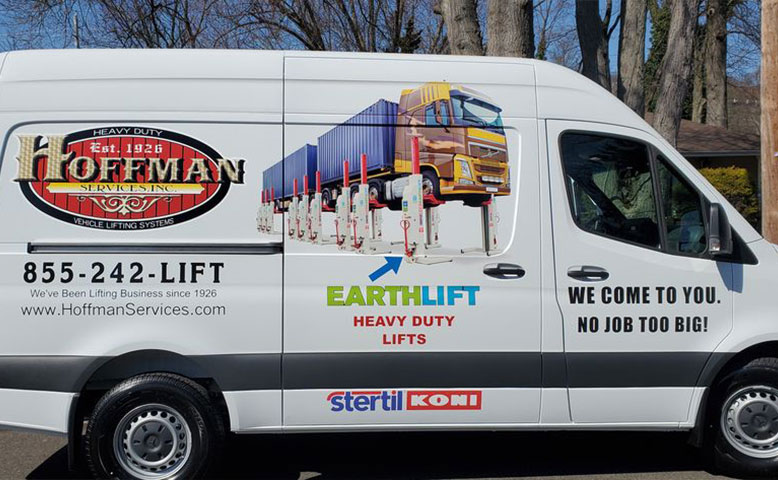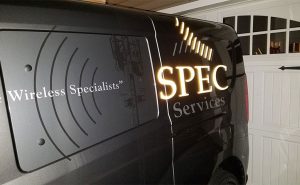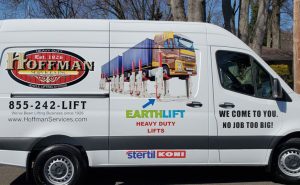If you run service vans, delivery trucks, or company cars, every trip can do more than drop off a parcel. It can pull in your next sale. Vehicle wraps turn your fleet into moving ads that people see on the street, in traffic, and in parking lots. They work while your team drives, parks, or makes a stop. In this blog, you’ll see eight clear ways wraps can raise your return on investment (ROI). We’ll keep the terms simple and share useful facts, including costs, materials, and easy tracking tips. By the end, you’ll know why wraps are a smart, low-stress way to make more from the miles you already drive.
Rolling Ads That Reach People Every Single Day
A wrap is a large printed film that covers part or most of a vehicle’s surface. It shows your logo, colors, message, and contact info. Think of it as a mobile billboard. But unlike a billboard, you do not pay rent for a spot. Your fleet already moves through busy areas, so each mile puts your brand in front of new eyes.
From a cost view, wraps can deliver at a very low cost per thousand views (CPM). Studies often show CPM in the low single digits for city routes because cars, buses, and walkers keep seeing the same vehicles many times a day. Even one van on a busy route can make thousands of daily impressions. Unlike a digital ad that ends when the budget runs out, a good wrap keeps working for years.
Quick wins:
- Park near job sites, schools, malls, or sports fields
- Keep the message short: logo, service, call-to-action
- Use a bold phone number and a short web link
Protects Factory Paint And Helps Resale Value
Wrap film acts like a shield between road wear and your paint. Most pro shops use cast vinyl around 2–3 mils thick (about a tenth of a millimeter), then cover it with a clear laminate of similar thickness for extra durability. This layer helps with UV rays, light scratches, and bug splatter. When it’s time to sell or update, the wrap can be removed to reveal paint that looks far newer than the vehicle’s age suggests.
Why does this help ROI? Lower wear on paint can mean a higher sale or trade-in price later. Also, you avoid constant touch-ups from chips or fading. Removal is usually done with controlled heat and plastic tools; a skilled tech can take off the film without damage. For many fleets, protection plus resale gain can pay back a large part of the wrap cost before ad gains are even counted.
Care basics:
- Hand wash with mild soap; avoid harsh brushes
- Rinse after winter salt or beach trips
- Fix small tears early to block water ingress
Consistent Fleet Branding Builds Trust And Sales
When your trucks look the same, people remember you. A steady color, logo, and layout across the fleet builds recognition. Clear branding helps buyers link your name to a service, which shortens their choice time the next time they need help. For home services, a marked vehicle also makes customers feel safer opening the door because they can see who you are and what you do.
Keep the design simple. Use high-contrast colors and large text that reads from 50–100 feet. Place key info on the sides and rear—drivers spend more time staring at the back of your vehicle in traffic. Add a short slogan or service list, but do not cram the panel with tiny text. White space is not empty space; it guides the eye to what matters. The easier your message is to read, the more calls you’ll get.
Design must-haves:
- Logo and phone number at least 3–4 inches tall
- Short web URL or easy-to-scan QR code
- One clear promise (for example: “24/7 AC Repair”)
Target Local Routes Where Your Buyers Are
Wraps work best when the right people see them often. Map the places your buyers go: schools for tutoring services, gyms for nutrition brands, office parks for IT support, or new housing zones for plumbers and electricians. Then plan routes and parking to pass those spots many times a week.
A simple rule is “repeat reach.” Seeing the same message 5–7 times helps a person recall it later. Your drivers can support this by using consistent parking habits near busy corners during peak hours. If you serve a small town, even two wrapped vans can “own” mindshare by looping the same high-traffic roads each day.
Routing tips:
- Use heat maps from delivery apps (or your own logs) to spot hot zones
- Park at the edge of the lots facing the main roads
- Time stops for school drop-offs, lunch rush, and commute hours
Fast Updates With Low Downtime And Fuss
Unlike a paint job, a wrap install is quick. A partial wrap can be done in about a day; a full wrap often takes 1–3 days, depending on size and body lines. This short break keeps your fleet on the road and your team working. When your offer changes—say, a seasonal tune-up or a new phone number—you can update a panel or apply a fresh overlay rather than redo the whole vehicle.
Wraps are also friendly for fleets with new units coming in. You can bring a new van up to brand standards right away, so it matches the rest of the team. That uniform look makes your company feel larger and steadier to passersby, which can lift call rates.
Keep downtime low:
- Approve design proofs before drop-off
- Stage vehicles so one works while one wraps
- Use modular layouts so small changes are easy
Long-Lasting Materials Cut Cost Per Impression
Most fleet wraps use cast vinyl because it conforms to curves, rivets, and deep channels with less stress. With a proper laminate and normal care, you can expect 5–7 years of service in many regions. In hot sun areas, lifespan may be closer to 4–5 years; in mild climates, it can last longer. UV-protected inks and overlaminate help keep colors stable. This long life spreads the cost over thousands of days and millions of views, lowering your cost per impression.
There are also specialty films with micro air-release channels that help techs avoid bubbles during installation. That saves labor time and reduces the chance of early lift at edges. For certain safety uses, reflective vinyl can be used on key zones so your vehicles stand out at night. While reflective film costs more, it can prevent costly accidents and improve night visibility.
Material notes:
- Cast vinyl + laminate: common, comfortable, durable
- Calendared vinyl: budget use on flat areas only
- Edge sealing: helps in car washes and harsh weather
Safety Features And Smart Codes Add Function
Wraps are not only ads; they can add helpful features. Reflective strips on rear doors or bumpers make stops safer at night. If your vehicles carry DOT numbers or other IDs, wrapping them ensures they stay clear and legible. High-contrast chevrons on service trucks can cut rear-end risks in dark or rainy conditions.
Smart codes—like QR codes—turn views into clicks. Place a code near the door handle or fuel door at a height people can scan while walking by. Link to a landing page with a special offer so you can trace the lead back to the vehicle. You can also use unique phone numbers per truck through call tracking services. That way, each ring tells you which wrap and route are paying off, helping you optimize where you send each unit during the week.
Functional add-ons:
- Reflective accents for night visibility
- QR codes to special discount pages
- Unique call-tracking numbers per vehicle
Simple Tracking Methods To Measure Real Returns
Measuring ROI does not have to be hard. Pick a few tracking tools and use them the same way every time.
Give each vehicle its own:
- Phone number (forwarded to your main line)
- QR code leading to a short, mobile page
- Promo code like “VAN15” printed near the door
Log leads by source in your CRM or a spreadsheet. Track three things: calls, web visits, and closed jobs. Compare those numbers to your wrap cost divided by the expected life (for example, total cost spread over 60 months). Even with modest weekly leads, the math often favors wraps because they keep working without new media spend. Review results monthly, and rotate vehicles across routes to see which areas give the best calls. Small, steady tweaks will grow returns over time.
ROI formula (simple):
- ROI = (Revenue from wrap leads – Wrap cost) ÷ Wrap cost
Care Habits That Keep Wraps Looking Fresh Longer
Clean, sharp wraps get more calls than faded ones. A quick wash plan can add years to your graphics. Hand wash with soft mitts and mild soap. Rinse off dust and grit first to avoid rubbing particles into the film. Skip harsh chemicals, strong solvents, and high-pressure washers. If you must use a pressure washer, keep the wand at least two feet away and avoid spraying edges straight on.
The sun is the main cause of fade. When possible, park in shade or indoors. Wax is not needed on most films, but some wrap-safe sealants can add a thin layer that helps repel dirt. Fix chips or lifted corners early; a small patch now prevents water from creeping under the film and saves a larger repair later.
Simple care list:
- Gently hand-wash every 1–2 weeks
- Wipe bird droppings and tree sap fast
- Check edges and seams during fuel stops
Wraps That Grow Returns Without Heavy Ad Spend
Vehicle wraps give you daily reach, steady branding, and real tracking without a large monthly bill. They help protect paint, lift resale value, and keep your fleet looking sharp in every neighborhood you serve. If you want clear results from the miles you already drive, a wrap program is a smart step. For design, materials, and installation done right, talk to Unique Sign and Auto Design. Our team can guide film choice, layout, and upkeep so your vehicles work as hard as your crew—all while keeping costs under control and results easy to see.



